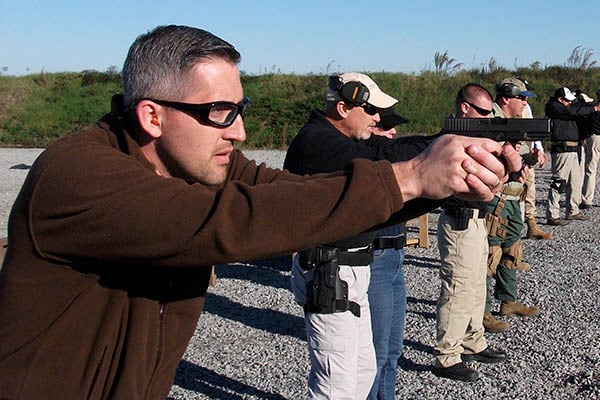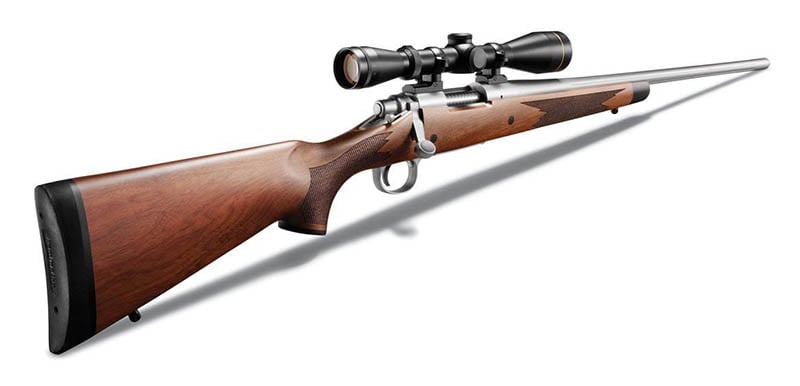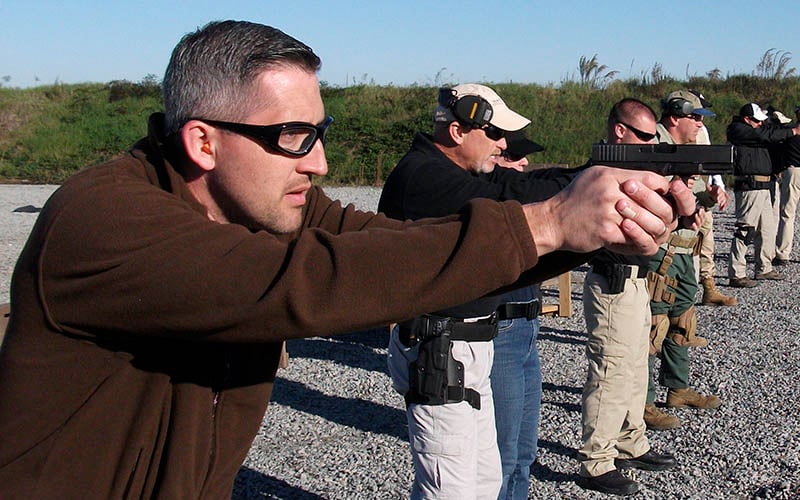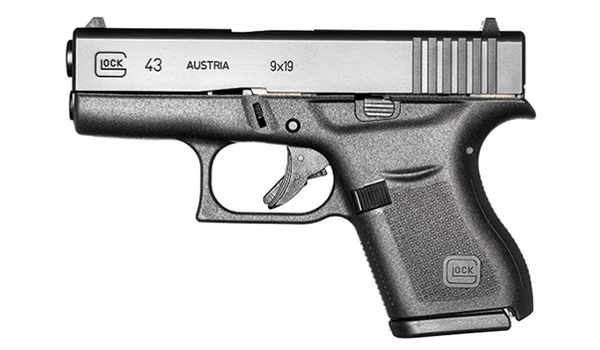
Last Updated on
You’ve decided to purchase your first firearm, and today more than ever it can be difficult to get sound, no-nonsense advice on what to do. There are plenty of people who will wonder why you need it or if it is a necessary purchase, but we won’t go into that, because we know that it is your right to own a firearm, plain and simple. Instead we’ll help you through this sometimes intimidating process with general guidelines for a firearm purchase, be it rifle, shotgun or handgun.
What’s Your Intended Use
Sure, there isn’t one universal firearm that can do it all for you, but you can choose a gun that will cover most of your initial needs. If you’re shopping for home defense, you’ll want to look at either a shotgun or a handgun. Handguns are easy to securely store in the home, and you can still open doors and move through your home easily with a revolver or semi-automatic handgun in your hand. However, aiming a pistol in the dark can be tricky without giving away your position with a pistol light or a laser sight. A shotgun on the other hand is easier to aim in less than ideal circumstances, but it will be more cumbersome should you have to investigate your home in the unlikely event of a break-in.
Wondering about a revolver or semi-auto pistol? Check out Revolvers -and- Semi-Autos.
Hunters will have to choose between a rifle or shotgun, and the right selection will depend on what game you’re hunting and your state’s restrictions on firearm use. For example, deer hunters in the Midwest are confined to using shotguns with slugs while hunters who live in the western states can use a rifle to hunt larger game. You’ll have to do your research based upon your state and what you want to hunt.

Finally, those who want to carry a concealed weapon will have their own set of needs when shopping for the right firearm. You’ll need a handgun that won’t “print” or be visible to others, and one that you can draw and handle easily despite its smaller size. However, you’ll want your handgun to have adequate stopping power in the event of a confrontation.
As you can see, there is no absolute, and selecting the right type will depend on where you live and what you desire out of your first firearm. The best advice we can give is do a good chunk of research before you go any further. Browse the articles on this blog and check state restrictions like hunting regulations and magazine capacity limits until you narrow down the type of firearm that is best for you. Once you’ve done that, you’ll need to think about recoil and caliber.
Recoil And Caliber
Next, you have to determine what caliber is right for you. This will really depend on two factors: how you can handle felt recoil and how much stopping power you need. Essentially you’ll want to balance the two factors so you have a firearm you can handle but one that has a decent level of stopping power. The best way to illustrate this is to look at the three most popular handgun calibers: 9mm, .40 S&W and .45 ACP.
The lowest recoil of the three, 9mm, is easier to control for beginners but offers less stopping power than the other two calibers. On the other hand, .45 ACP has the highest recoil of the three, but it is harder to control for beginners. Honestly, first time firearm owners should consider 9mm before any other firearm caliber as it is a good training round and generally “less intimidating” than the other two calibers. When it comes to stopping power, your mentality should be “put more rounds on target with a lower stopping power vs. placing one round on target with a higher stopping power.” This is not to say that 9mm is the best choice for everyone, but those who are smaller or worried about recoil should start with a round like 9mm.
This mentality will be important in hunting rifle calibers as well. A rifle with a heavy recoil may offer too much of a “wallop” and effect your accuracy, especially on longer shots, but you want a round that can take down the big game you want to hunt. The best course of action is to find something in the middle, and rifle recoil charts offer a good reference point for this. Just make sure you select a common rifle caliber.

Concerned about rifle recoil? Look into: Six Easy Ways To Tame Long Gun Recoil.
For those in the market for a shotgun, the 12 gauge dominates as the universal caliber choice, and most will find it appropriate for every sporting activity a shotgun requires. The one additional spec to note is whether or not the shotgun shoots 3 1/2 inch “magnum” shells or just 2 3/4 and 3 inch shells. Essentially the ability to shoot 3 1/2 inch magnum shells allows you to shoot larger loads (at geese for example) should you need them.
One other note – you should select a popular caliber that is widely available and one that you can afford to buy a lot of and shoot frequently. If your chosen ammo is rare or you can’t afford to fire hundreds of rounds through the firearm, then it is not right for your first purchase. You’ll want to train frequently once you decide on the right firearm for you, and you’ll need plenty of ammo for that. Once you decide on caliber, you’ll need to take a moment and think about sizing.

Get The Right Size
Sizing can be an important factor that many first-time shoppers can overlook. A handgun must fit in your hand snugly, and the fit of a shotgun or rifle must be properly sized. The best way to size a firearm is to get hands on. Talk to your friends to see what they have or go to a local gun range where you can try out various firearms. Try different handgun grip styles and sizes to see what fits your hands. Many firearms now offer grip adapters and spacers that help adjust the fit to your needs, and if you have smaller or larger hands, this may be an upgrade you want to look for in your search.
For more on shotgun (or rifle) fit, check out: How To Fine Tune Your Shotgun Fit.
Once you’ve taking sizing into account, you can turn to selecting a brand.
Brand Research
There are plenty of brands that offer firearms in the caliber and size you’ve selected, but it can be hard to know who to choose. It’s hard to go wrong with popular handgun brands like SIG Sauer, Glock, S&W, Colt, H&K and more or to choose popular hunting brands like Benelli, Remington, Browning, Mossberg, etc., but since this is your first purchase, you’ll want to balance the desire to get a quality firearm with a reasonable budget. The best universal advice we can give is spend more than you would on the lower tier of firearms available, but don’t head straight for the “top shelf” firearms quite yet either. To speak very generally, a budget of $400 – $800 is probably adequate for any first time owner. After your first purchase, you’ll find there are always variants, upgrades and new releases to invest in afterward.

We can’t tell you which brand to choose because we’re not you, but if you do your research, read reviews, watch videos, talk to friends, and call in and talk to us, you stand a better chance of finding the best firearm for your needs. Once you’ve landed on that brand, it is time to shop for it.
Gun Shop Or Online Purchase?
At this stage, many people will recommend heading to a gun shop to make your purchase, but an online purchase can have many advantages that a gun shop won’t. First, online selection is almost always better than what you’ll find in a gun shop. You don’t want to sacrifice your long process of research by settling on a firearm that is “almost” what you wanted. Instead, you can find the exact firearm you want online and have it shipped to a local gun shop or FFL holder near you. Secondly, many times online prices are better than those you’ll find in the store, even after you pay the FFL transfer fee. You can still support your local gun shop by transferring a firearm to them via the FFL process as well.
Have more questions? Feel free to contact us and we’ll help you through the process.
Image three and thumb courtesy of Wikimedia Commons.




Leave a Reply